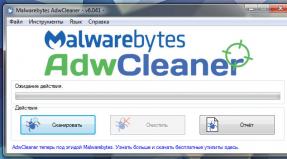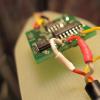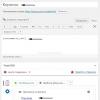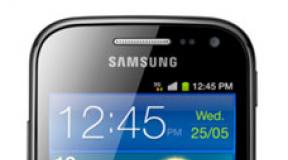Rufus latest version. Meticulous overview of parameters. Creating a bootable UEFI USB flash drive
Hi all. For a long time, readers of the site have asked me to review the updated program for creating bootable flash drives Rufus. There is a website dedicated to this program. There, friends, you will find instructions on how to use it (in versions 2.x) in specific situations and for specific purposes. In this article we will talk about the changes Rufus has made to its new version 3.1. And, of course, we’ll look at how to now use it to create bootable flash drives with a Windows and LiveDisk installer based on WinPE and Linux.
What has changed in Rufus
Nothing has changed significantly in the program. Rufus 3.x is still a small, narrowly focused program that can do only what it can do and nothing more. It is still free, it still exists in the regular version for installation in Windows environment and in a portable version. And you can still download it on the creators’ website:
But there are also changes. Rufus no longer supports creating bootable media for Windows XP and Vista. If you need to write them down, you will have to use any old version Rufus 2.x. Old versions can be downloaded on the same official website of the program indicated above by clicking the link below to download the current version “Other versions”.
Rufus 3.x now has the ability to calculate checksums ISO image and transferring the contents of USB drives to a file virtual disk VHD. We will return to the latter possibility later.
The first thing that catches your eye is the changed interface and organization of Rufus 3.x. The program has become more modern, matching the current versions of Windows. If several external USB drives are connected to the computer, we, as before, select them in the top “Device” column. But the ability to select an ISO image from the bottom of the program window has moved to the top. And now called "Load Method". As such a method we can specify ISO images of Windows and LiveDisk, as well as regular images (not bootable), MS-DOS and FreDOS images.

The principle of choosing the type of boot media has also changed in Rufus - for UEFI systems on GPT disks and for systems on MBR disks with BIOS Legacy. Now we have the only choice available, the only reference point - the partition layout. We can choose either GPT or MBR. And Rufus itself will determine the type of system - only UEFI or BIOS/UEFI-CSM, also known as Legacy mode, and also known as UEFI compatibility mode with Legacy. Those. The developers have made choosing the type of flash drive simpler and clearer. How does it all work?
Creating a bootable Legacy USB flash drive
If we, friends, need to create a bootable USB flash drive for a computer with a regular BIOS Legacy, select “MBR” in the “Partition scheme” column. The BIOS type and NTFS file system will be adjusted automatically. Next, just click “Start”.

Creating a bootable UEFI USB flash drive
If you need to create a UEFI flash drive, select “GPT” in the “Partition scheme” column. The UEFI system type and the FAT32 file system, as in the previous case, will be installed automatically. Next, click “Start”.

Creating a bootable UEFI USB flash drive with NTFS file system
Rufus can create a bootable UEFI USB flash drive with file NTFS system, if the image being recorded contains files whose weight exceeds 4 GB.

Creating Windows To Go
Like versions 2.x, Rufus 3.x can create Windows To Go. If we indicate ISO with the process in the “Loading method” column Windows installations, we have a choice - standard installation or Windows To Go.

Type of formatting and checking bads
Rufus 3.x inherited advanced formatting options for USB devices from previous versions. When creating media, by default the program performs a quick (shallow) formatting. But if necessary, we can uncheck quick formatting to activate full (deep) formatting. And also, if necessary, we can activate the option to check the media for bad blocks.
Probably many users involved in creating bootable media have heard of a program such as Rufus. The instructions for using it are quite simple. However, there are several key points and nuances that should be mentioned separately. For the Rufus 2.7 program, instructions for use will be considered (although today this particular modification is not relevant).
What is Rufus for?
The application is a universal tool for quick creation bootable media, which are USB devices. For the Rufus application, the instructions for use directly indicate that the storage media can be regular flash drives, external USB hard drives, and even removable memory cards (their file system is supported).
Let us immediately note that this program is focused exclusively on USB devices, so create bootable media in the form optical disk or other hard drive will not work.
Main features of the application
For Rufus, the instructions point out one interesting point related to some non-standard capabilities of the application.
The program itself is designed to work in the operating systems Windows, Linux, etc. (Windows supports modifications from XP to 10). But the most amazing thing is that the application is capable of creating firmware for BIOS and UEFI or recording system images for working on computers that do not have any OS.
You can't refuse BIOS support either. For the Rufus application, the instructions indicate that both are supported. outdated versions, and the newest ones in the form of UEFI.
The scope of the program is quite wide. You can create bootable media for more than just installation needs operating system from scratch (or re-installation). It is actively used to recover OS and passwords. In addition, when writing to media, the application can find bad or problematic sectors, format or restore USB drives.
Released versions
Today there are two main modifications of the program: stationary and portable. Both versions take up little space, and the difference is that all settings for the stationary modification are written in the keys system registry, and for portable use it is specially used created file settings.
Rufus program: instructions. Beginning of work
It makes no difference whether the user launched a portable or desktop version, the first step is to perform the initial setup.
The application interface is configured to use English by default. Therefore, first you need to click on the globe icon located at the top right, and select Russian from the menu that appears.

Please note that the program interface (for Rufus the instructions directly indicate this, and the user can see it with his own eyes) contains only one window in which all actions will be performed. This completely eliminates the possibility of pressing the wrong button or selecting the wrong option.
Selecting a partition scheme
So, the program is running (until the flash drive is inserted, the main fields will be empty). As soon as the user inserts the device, the application detects the drive and fills in all fields automatically!

If several devices are connected, you can select the one you need from the list. For the uninitiated person, this is just a godsend, because in most cases the parameters set in the main fields do not need to be changed. The only exception is the recording method, but more on that later. But if you still need to make changes, we will consider each parameter separately.

At the initial stage, you need to select the partition type. There are three options here:
- MBR ( boot record) for BIOS or UEFI;
- MBR for UEFI only;
- GPT for UEFI.
What to choose from all this? The first option is universal. The second is intended for computers exclusively with UEFI systems. The third option should only be chosen if computer system used HDD with a capacity of more than 2 GB.
File system definition
For Rufus, the instructions in the next step involve selecting file system. Usually NTFS is offered by default.

But in principle, if the boot distribution (image) of the system being installed is less than 4 GB in size, you can install FAT32. The default cluster size set by the program itself can be left unchanged.
Volume label and formatting options
Next, you will need to specify the volume label (but this is not required) and go to the formatting options. To save time, you can leave quick formatting, however, if there is doubt that the media may have been damaged, you can use the full one. In this case, you must leave a checkmark in the field for creating bootable media.

Now the most important thing. In most cases, you should select from the drop-down menu to create a disk from an ISO image, after which, using the browse button, you will need to specify the path to the source in the form of a pre-loaded or saved image of the future system.
Activate recording
Finally everything preliminary actions completed. Just in case, we check the set parameters again, simply press the start button and agree with the notification that all data on the device will be destroyed during the formatting process.
Then all you have to do is wait for the recording process to complete. According to the developers themselves, the process, for example, for Windows image 7, may take approximately 5-10 minutes, no more. This figure is believed to be the minimum among all programs that can be used to create bootable USB drives.
Rufus: instructions (Windows 10). Using Windows To Go
The version of the program 2.0 and higher, used in Windows 8 and 10, looks more interesting. When using it, you can see a special Windows string To Go, which needs to be used instead of the standard system installation.

What it is? It turns out that this method of creating bootable media is designed to burn onto it in such a way that when you boot from it, you can run a full-fledged Windows Enterprise OS and work with it like a regular OS!
However, during the recording process, some important conditions must be met. First of all, as stated, it is required to use exclusively USB drives recommended by Microsoft (if Windows is needed as the working OS). The second condition is that the drive must have a capacity of at least 32 GB. Otherwise, the entire process is completely identical to the steps described above. The only thing you should pay attention to is setting the NTFS standard as the file system (in no case FAT).
Conclusion
As a kind of afterword, it remains to say that the program really looks very convenient and fast. This is confirmed not only by many users, but also by professional experts. In addition, understanding the application will not be difficult even for a person who has never created bootable media in his life and is about to do it for the first time. There is only one window ( work area) and almost complete automation speak only in favor of this application. It's no surprise that it earned so many rave reviews.
By the way, the recording speed is especially noted. Even the portable version works so quickly that many similar heavy packages could not even dream of this. And if you consider that you can also use the USB 3.0 standard, the recording speed increases incredibly. In addition, the creation of media with full working system In general, it evokes genuine admiration.
Rufus is a great utility for creating bootable flash drive. Free, easy to use and versatile. With its help, you can record an image of Windows XP, 7, 8 or 10. And most importantly: recording is approximately 2 times faster than, for example, . Therefore, in this article we will look at how to use the Rufus program.
To begin with, it is worth noting some features of Rufus:
- Works on all versions of the OS: from Windows XP SP2 to the new “ten”.
- Writes USB flash drives for PCs/laptops with both old BIOS and new UEFI BIOS.
- Creates USB drives for Windows recovery or password.
- Works on PCs and laptops without an installed OS.
- No program installation required.
Main advantages of Rufus:
- contains only one menu screen (thanks to this, the likelihood of clicking the wrong thing is reduced to zero);
- can find problem sectors on USB drives, as well as format and restore flash drives.
The only negative is that due to its simplicity, Rufus cannot create multiboot flash drives. Although the program is simply not designed for this.
How to make a bootable USB flash drive for Windows 7?
Everything is done extremely simply, so there will be no problems. Even if you decide to create a bootable USB flash drive for the first time.
In today's article we will look at how to use Rufus. This program designed for creating bootable USB flash drives with Windows. With its help, we can write the downloaded ISO image of the operating system onto a flash drive and then install the system on the computer, restore its operation after serious failures, or use it to solve other problems. Rufus supports all versions of Windows starting from Windows XP. The main advantage of this program, according to the developers, is that it can create a bootable USB flash drive with Windows or Linux faster than its other analogues, while the program is free.
Since Rufus is completely free utility, then I recommend downloading it from the official website of the developers.
As the creators assure, the program will be useful to us in the following cases:
- needed from the installation ISO image (Windows, Linux, UEFI, etc.);
- you need to work on a computer that does not have an installed operating system;
- you need to flash the BIOS;
- you need to run a low-level utility.
As you can see, the developers themselves are pushing us to acquire such a wonderful program in our arsenal. I would also like to draw your attention to the fact that the program has a very small weight, less than 1 MB, thus it will not take up space on any media.
There are two versions of Rufus:
- regular version, requires installation on a computer;
- Portable version, i.e. portable, it does not need to be installed, but it will be enough to launch the downloaded distribution kit.
In order to download the program you can go to the official website: http://rufus.akeo.ie
In the browser window that opens, scroll down the page and under the “Download” field, click on the link and download the version you like.
Another plus is that the developers’ website is entirely in Russian. This way we don't have to look for the page translation.
How to use Rufus? Setup before launch!
After we have downloaded the program distribution, let's figure out how to use Rufus. To do this, run the utility, if you see that the program has English language interface, then click the globe icon, which is located in the right top corner and select Russian language. 
In order to start setting up the program, you need to connect USB flash drive. As soon as it is installed on the system, the program will immediately detect it. 
Note! If several removable drives are connected to the computer, then select the one on which the image will be written. Otherwise, you may lose data from the flash drive if you select it incorrectly.
After you have dealt with the media, you can go to the settings ISO recording image.
In the “Partition scheme and system interface type” field, the following options are available to us:

As you can see, the Rufus program supports creating a bootable USB flash drive for different motherboards with BIOS and UEFI.
If you don’t know which option to choose, then choose the first item – “MBR for computers with BIOS or UEFI”, since it will be suitable in most cases for almost all computers.
The next item that can be configured in the program is “File system type”, which will be on .
Note! If the downloaded Windows ISO image is more than 4 GB, then you need to select the NTFS file system.
In general, the following file system types are available for the drive:
- FAT32;
- NTFS;
- exFAT.
This item can be left by default, then the program will make changes, if necessary, independently. We also leave the “Cluster size” item unchanged.
In the “New volume label” field, you can enter the name that will be assigned to the created bootable flash drive. It is advisable to provide a clear name.
At the end of the setup, you need to indicate to the system that we will burn an ISO image and by clicking on the button in the form of a disk, indicate the path to the image. 
If you do not have the latest Windows 10 image, then read the article from the official website.
To begin the process of writing an image to a flash drive, click the “Start” button.
Recording to USB Windows To Go using Rufus.
If you use the Rufus program on Windows 10 or 8, then you may have noticed the “Windows To Go” item. By checking this box, you can write images to a flash drive Windows systems Enterprise – Windows To Go, this image can be launched directly from a flash drive. 
Note! For this purpose you will need USB drive large capacity: from 32 GB and above. Also, not all flash drives are suitable, but only those recommended by Microsoft. If you need exactly this version of the operating system. Able to run without installation, Rufus will help you create it.
The process of recording an image in Rufus.
Since you and I have figured out a little how to use Rufus, let's look at the process of recording the image itself. After we have completed all the program settings and are ready to start the process, click the “Start” button.
The program will display a message warning that all data on the flash drive will be deleted. Accordingly, if there is nothing important on it, then click the “Ok” button, otherwise cancel the process. 
After the start, the recording process will begin ISO image to the carrier. You just have to wait a while. By the way, the timer that counts down the remaining time is located in the lower right corner. 
After the recording is completed, close the program window and open “My Computer” and see that we have a disk with Windows 10. I recorded this image on my flash drive, you may have a different name. This is our created bootable USB flash drive.  Now you can insert it into any computer and reinstall the system. By the way,
Now you can insert it into any computer and reinstall the system. By the way,
basic information
Name: Rufus
Version: 2.18.1213 / 3.5 Build 1497
Release year: 2017
Interface language: Russian, English and others
Treatment: Not required
System requirements
Windows XP or later, 32 or 64 bit does not matter.
Description
Rufus- useful utility, which will help you format and create Bootable USB flash drives. Despite its small size, the program can do everything you need to create installation media with a bootable ISO image. If desired, the user will be able to align partitions on the flash drive and much more.
Possibilities:
- Checking the flash drive for bad blocks (writing data in several passes, from 1 to 4, default – 2).
- As for creating “boot” media, the following options are possible: MS-DOS / FreeDOS (built into the utility itself) or - SysLinux (a set of “penguin” kernel loaders).
- Burn bootable ISO images
- Keeping logs, which can also be useful in particularly serious cases.
- Portable version, works without installation on a computer.
DOS support notes:
If you create a bootable DOS disk and use a non-US keyboard layout, Rufus will try to select a keyboard layout based on your system locale. In this case, it is recommended to choose FreeDOS (it is the default), since it supports more keyboard layouts than MS-DOS.
Notes on UEFI/GPT support:
As of version 1.3.2, Rufus supports UEFI/GPT installation media, which means it will allow you to install Windows 7, Windows 8 or Linux in full UEFI/GPT mode. However, Windows Vista and later Windows versions require full UEFI/GPT support. Due to an OS limitation, Windows XP limits the creation of bootable disks in UEFI/MBR mode.
Rufus is useful when:
You need to create a USB installation media from bootable ISOs (Windows, Linux, etc.)
You need to work on a system that does not have an installed OS
You need flash BIOS or other firmware from DOS
You want to run low-level utilities.
List of ISOs that Rufus works with:
Arch Linux, Archbang, BartPE/pebuilder, CentOS, Damn Small Linux, Fedora, FreeDOS, Gentoo, gNewSense, Hiren's Boot CD, LiveXP, Knoppix, Kubuntu, Linux Mint, NT Password Registry Editor, OpenSUSE, Parted Magic, Slackware, Tails, Trinity Rescue Kit, Ubuntu, Ultimate Boot CD, Windows XP (SP2 or later), Windows Server 2003 R2, Windows Vista, Windows 7, Windows 8, Windows 8.1, Windows 10.
Screenshots: 

Read also...
- Cadaques in Spain. My review and photo. Cadaques, Catalonia Cadaques Spain how to get there from Barcelona
- Cart for an online store at the front or Writing modular javascript
- Falling snow on jQuery or html New Year greeting card template
- Where to see what version of Android is installed on an Honor and Huawei phone How to find out the Huawei serial number



















